[ad_1]
This post may contain affiliate links. We may receive a small commission, at no cost to you, if you make a purchase. Read Disclosure.
The Bay of Fires is one of Tasmania’s biggest attractions and needs only a few words to explain how magnificent they are.
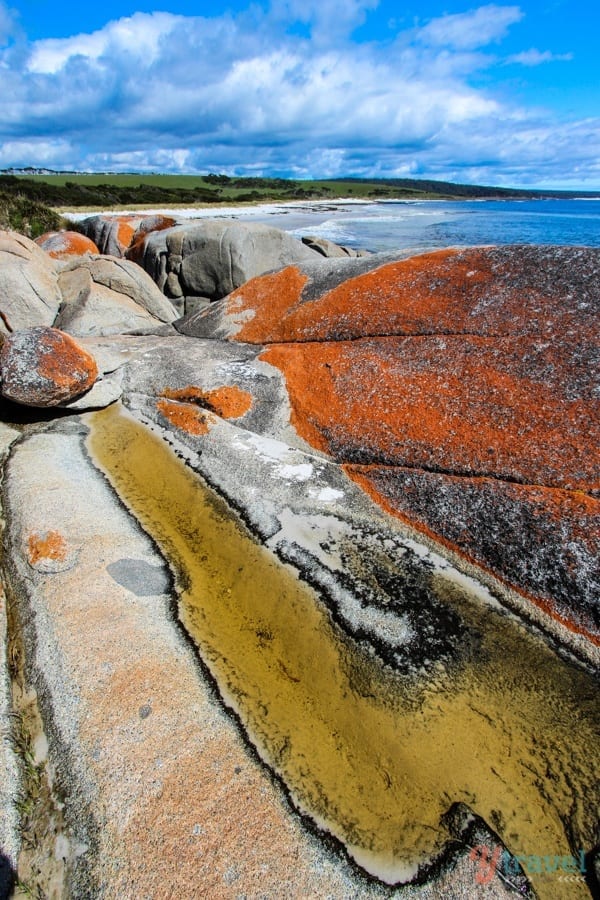
Situated on the northeast coast of Tasmania, the Bay of Fires is a region of white beaches, blue water, and these incredible orange-hued granite rock formations in which the fiery colour is produced by a lichen.
We spent the morning there climbing over the rocks, wandering the beaches, and being mesmerized by the colours.
If you’re thinking of visiting Bay of Fires on your trip to Tasmania, here is everything you need to know…
What is the Bay of Fires?
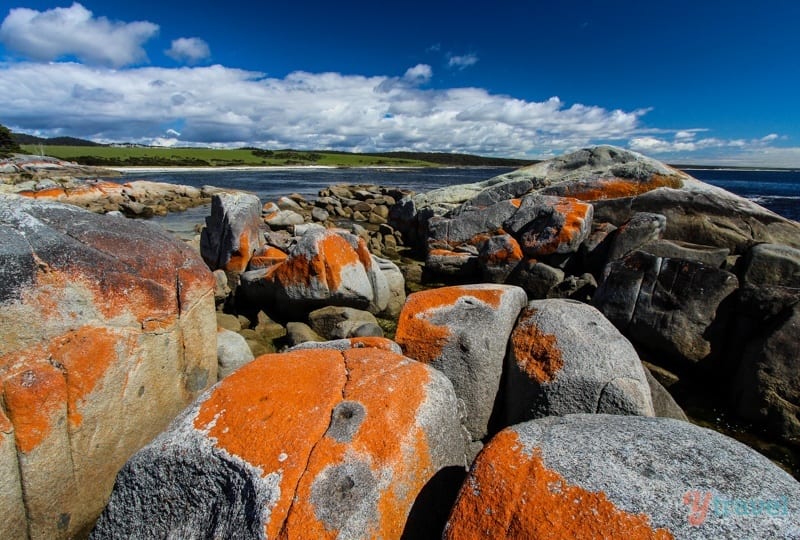
The Bay of Fires are a unique set of rocks that adorn the Eastern shoreline of Tasmania. They get their name from an English navigator named Captain Tobias Furneaux, who passed by the shores in 1773.
When he looked over at the beach, he saw fires burning all along the coast. They were lit by the local Tasmanian Aboriginal people.
Today, they are known not only for the story of aboriginal fires, but for their gorgeous white sand beaches and crystal-clear waters, and most famously, the granite boulders that are covered in orange lichen, giving them their unique appearance.
Where is the Bay of Fires?
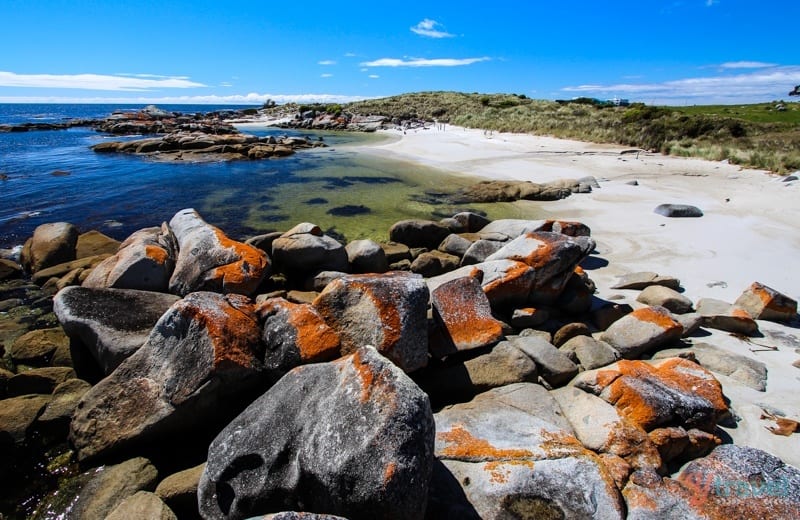
The Bay of Fires is located in the Skeleton Bay Reserve, 186km (2.5 hours’ drive) from Launceston.
The nearest town is Binalong Bay, the gateway to the Bay of Fires, which is situated at the southern end of the Bay of Fires.
The Bay of Fires, while indicated as one point on the map, is actually a whole coastline that expands for about 50km.
It starts from Binalong Bay which is considered the main beach area, and extends all the way up to Eddystone Point in the north.
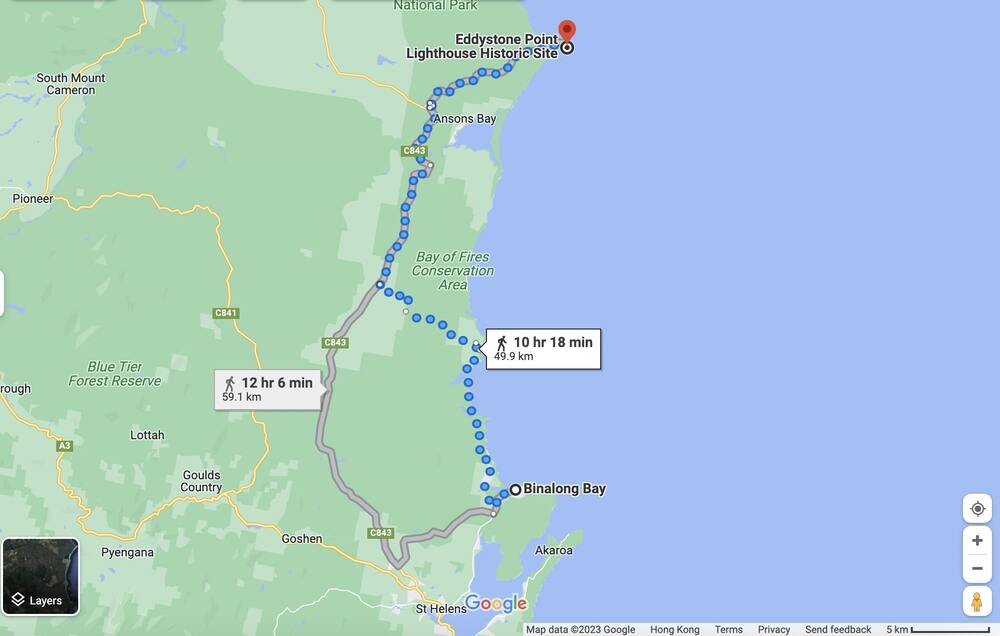
The best way to see it is to walk from Binabong Bay, but depending on your fitness level will tell you how far you walk.
You can walk 5 minutes from the town and see them, or hike for 40km to Eddystone Point through the Bay of Fires Conservation Area.
How to Get to Bay of Fires
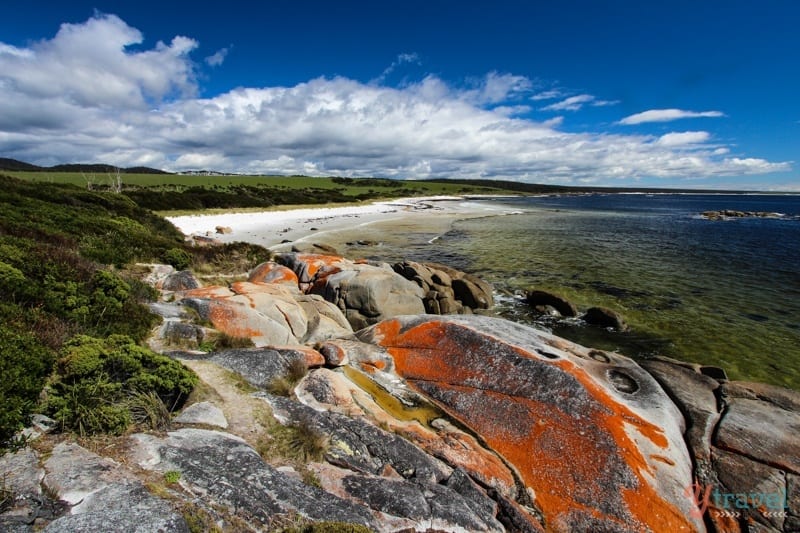
To get to Bay of Fires you will need to drive towards St Helens along the A3 (Tasmanian Highway), and then turn off onto the C850 towards Binalong Bay. The drive from St Helens to Binalong Bay is about 10 minutes.
If you’re driving from Hobart, it’s about 3.5 hours drive. Click here for rental car availability and prices.
Alternatively, you can get a bus from Launceston to St Helens by Calow’s Coaches, but you will need to get a taxi from St Helens to Binalong Bay.
You can also find multi-day hiking tours that go from Launceston. These tours are from 3 to 5 days.
Check out the multi-day hiking tours for Bay of Fires below:
Tips for Visiting Bay of Fires
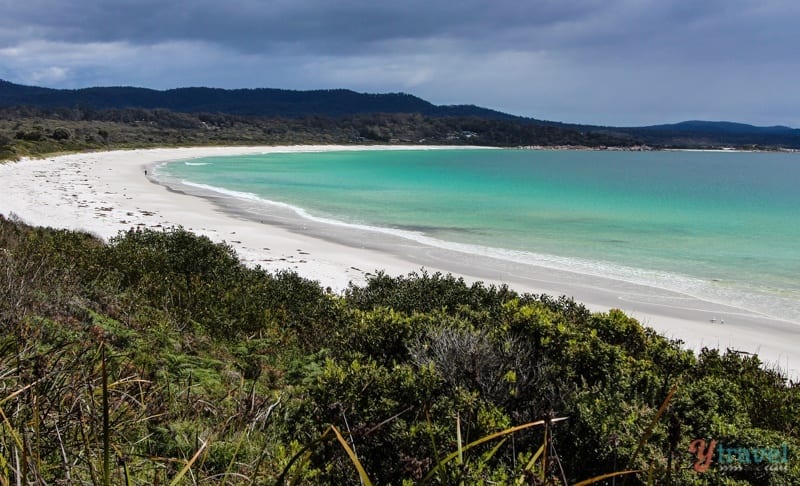
Before you go, here are some tips for visiting Bay of Fires:
- Wear sturdy shoes, the rock surface can be slippery.
- Try to stay in Binalong Bay the night before and visit them for sunrise, it’s the most beautiful time of day to see them.
- If you don’t want to walk along the coast, the best place to see them is from the boardwalk, or from The Gardens Headland
- Keep your eyes out for wildlife! The park is known for being home to Sea Eagles, Tasmanian Devils, Black Cockatoos, Wallabies, Wombats, and Pademelons. Wildlife is most active in the morning.
See accommodation options for Binalong Bay in the Bay of Fires on Boooking.com
Things to Do Near Bay of Fires
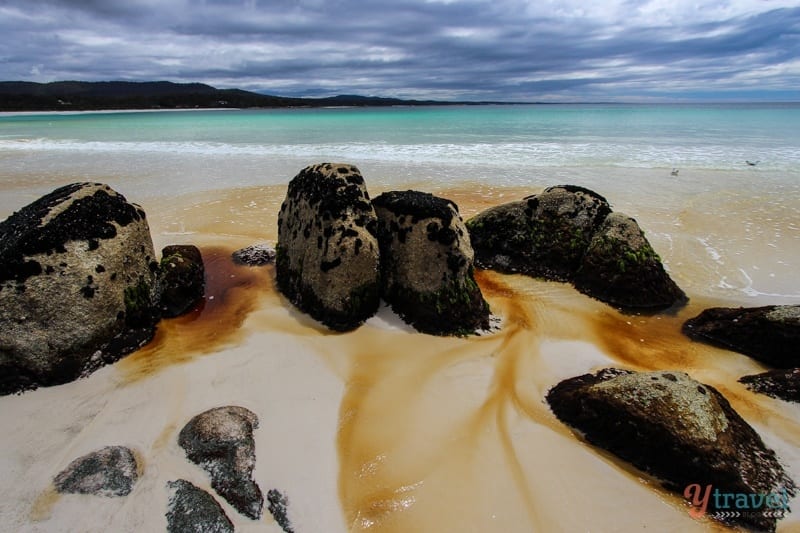
You might find that visiting the Bay of Fires takes no time at all, or you’re happy to spend a whole day exploring them and marvelling at this unique phenomenon.
But if you have made the trip to Binalong Bay and you’re wondering what else to add to your itinerary since you came all this way, here are some other activities I recommend…
1. Take the Bay of Fires Lodge Walk
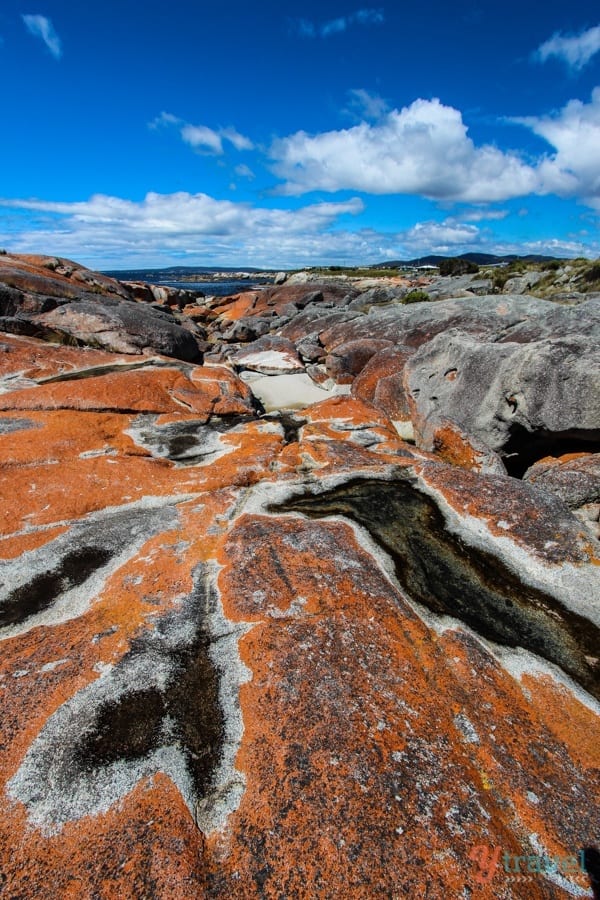
If you want to see the entirety of the Bay of Fires coastline, then the Bay of Fires Lodge walk is a 4-day walk from Stumpy’s Point to the Bay of Fires Lodge.
The route takes you from Boulder Point in Mt William National Park, hiking along easy grade 3 terrain past secluded coves, through the lush forest, and along the Ansons River.
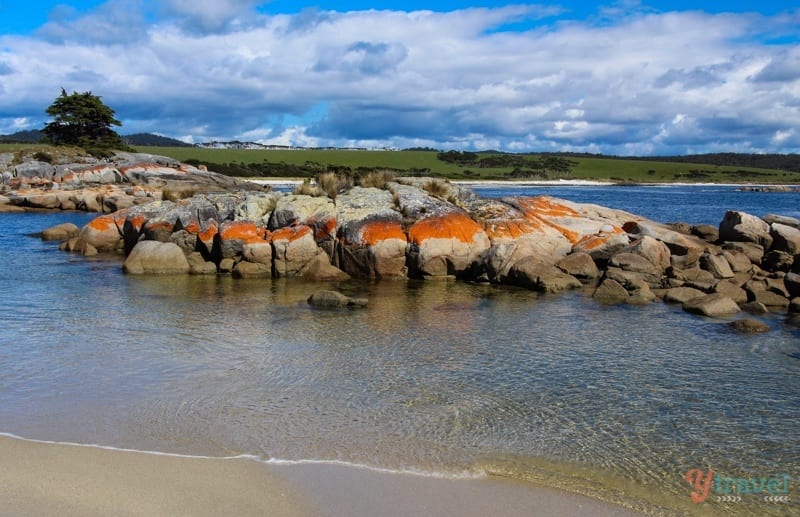
This is a hiking expedition for those who don’t want to skimp out on luxuries. You stay in semi-permanent tents in the dunes, walk at a leisurely pace while your guide tells you about the early inhabitants of the region, as well as take an excursion to go kayaking.
This is a great way to not only see the Bay of Fires, but the beautiful natural surroundings of Mount William National Park.
2. Walk the Wukalina Walk
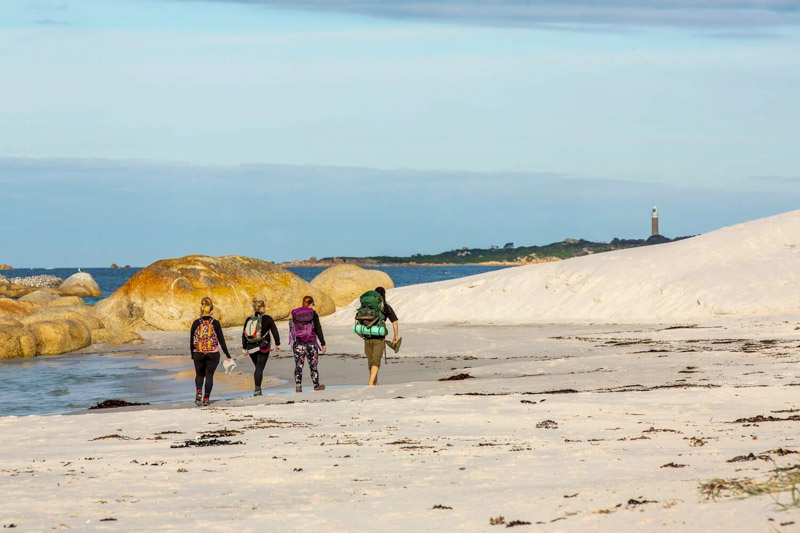
Another great Bay of Fires walk you can take is the Wukalina Walk, which is a 3 day/ 4-night walk guided by the palawa people, the original owners of lutruwita (Bay of Fires region).
As you walk, your guide will share their knowledge, perspective, and stories of the original owners of this land.
You will be picked up from Launceston, and then the walk begins at the northern ends of the Mt William National Park, where you will hike to the summit of wukalina, sleep under the stars, take part in a traditional smoke ceremony, take part in weaving, clapstick making, and shell stringing activities, and of course hike to the Bay of Fires.
You will walk past Anson’s Bay and Seaton Cove, before finishing the walk at Eddy’s Point Lighthouse where a bus will take you back to Launceston.
3. Go Camping at Bay of Fires Bush Retreat
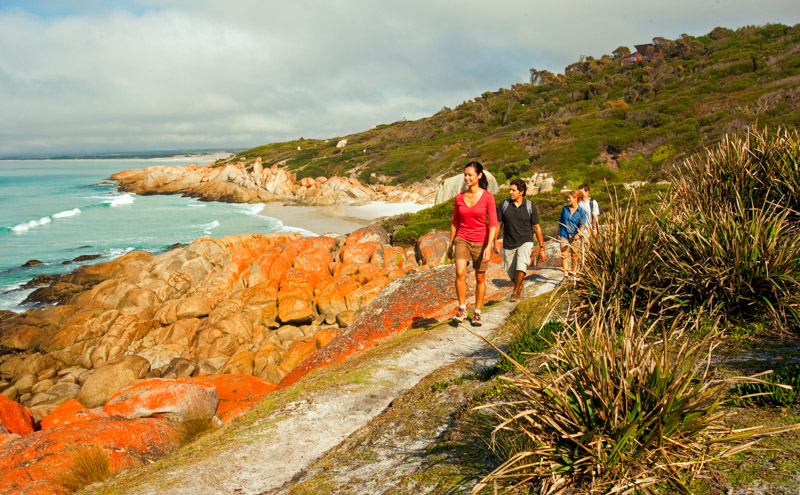
Located in Binalong Bay, just behind Grants Lagoon, the Bay of Fires Bush Retreat is a modern and luxurious bed and breakfast that offers glamping experiences.
You get to sleep in one of their 10 bell tents, camping out under the stars and enjoying the tranquility of the area. But with the luxury of free WiFi, and a terrace with a bar.
Each tent comes with a king-size mattress and modern decor, but they do have shared toilets. You also have a morning breakfast included in the rate.
4. Visit Eddystone Lighthouse
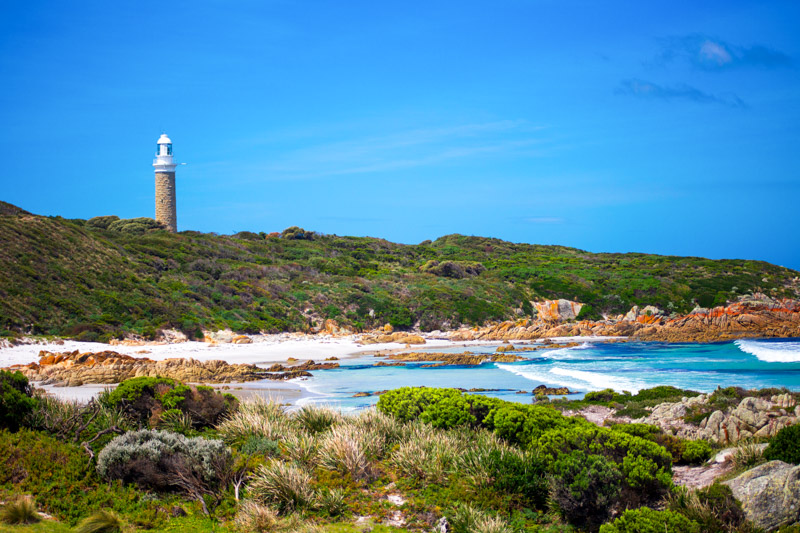
The Eddy Stone Lighthouse has been in operation since 1889, and is an architectural wonder and a symbol of Tasmania’s rich history.
Perched on top of a pink granite tower, you can climb to where the lighthouse sits and see breathtaking views of the coastline and Bay of Fires.
Around the lighthouse are a picnic area and campsite. You cannot go inside the lighthouse, but where it sits is an area of stunning beauty.
You can also drive to the lighthouse if you don’t feel like walking.
5. Hike from Swimcart Beach to Sloop Reef
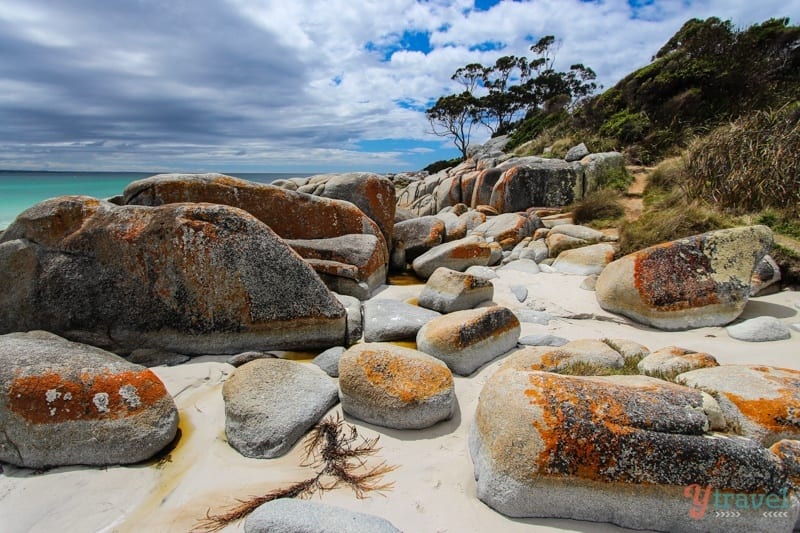
A popular section of the Bay of Fires walk that I recommend you walk is from Swimcart Beach to Sloop Reef.
This section is an easy 2.4km walk and has some incredible views of the rocks, passes hidden coves and lagoons, and also has some great places you can surf.
The hike starts at Swimcart Beach, also known as Jeannert Beach, and passes Cosy Corner campground and Cosy Corner beach (south and north) which is a great place to surf.
The waves on Swimcart Beach and Cosy Corner are some of the best along the Bay of Fires region, so if you want to take a board out onto the ocean this is the place to go.
Before You Go
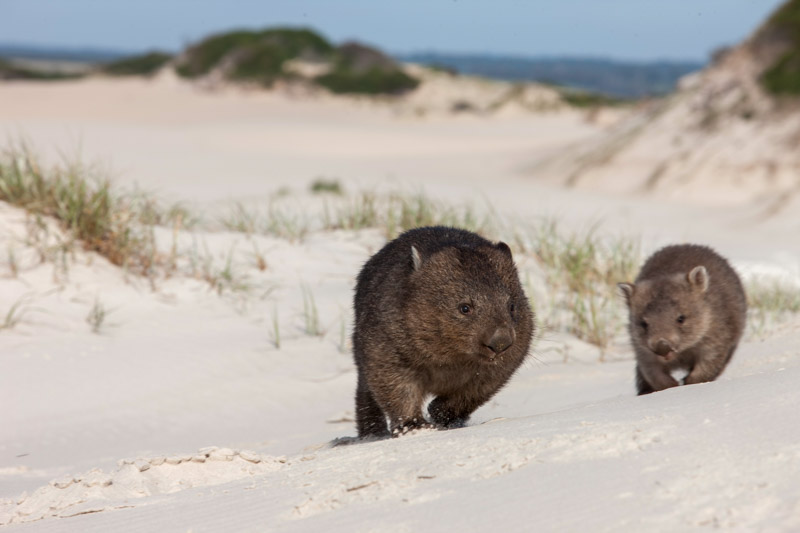
If you haven’t had enough white sandy beaches in Tasmania, then you should make sure to check out Bay of Fires. It’s not just a beautiful beach, but an area of national importance.
Take some time to learn about the aboriginal history of the area and how it is important to them.
I hope this guide helped you learn about the Bay of Fires in Tasmania, Australia, and gave you some inspiration for visiting.
HOT TIP – Finish your visit to Bay of Fires at the Meresta Eatery for good hot coffee, yummy cakes, and fantastic views over Binalong Bay!
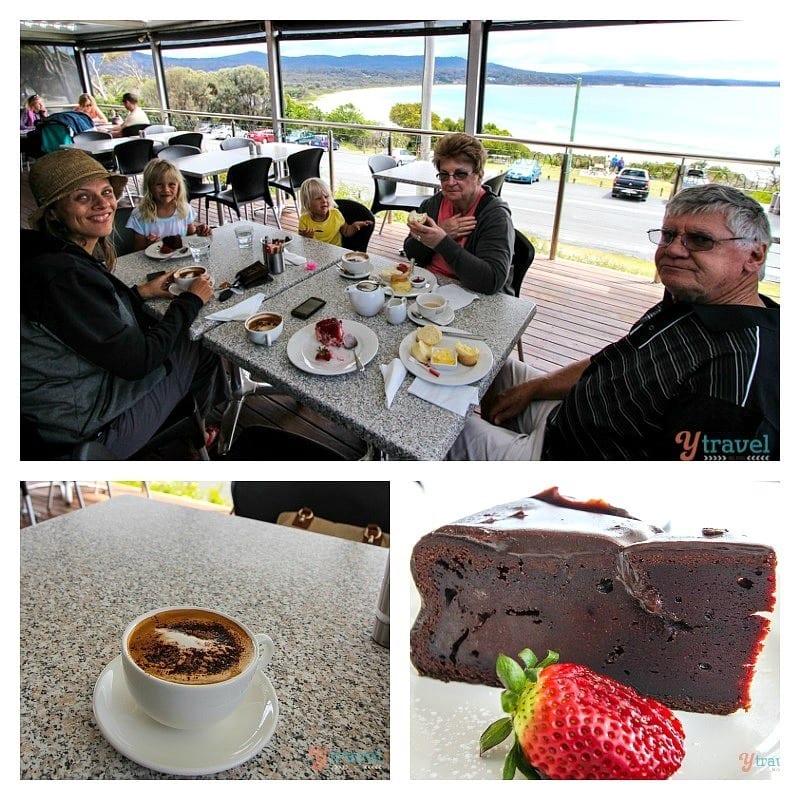
[ad_2]
Source link
